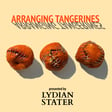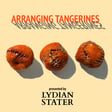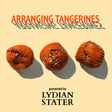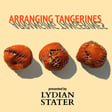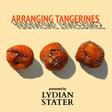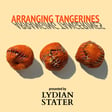
Arranging Tangerines Episode 36 - A Conversation with Huidi Xiang
In this week’s episode, we sit down with Huidi Xiang to talk about her work in our current exhibition “Neither Here Nor There” at Lydian Stater in addition to how gaming influences her work, the overlaps between digital gaming assets and NFTs, the ethics of underpaying oneself, the problems of underpaying others, repetition as a metaphor for labor, the tragedy of The Villager’s Down Special Move in Super Smash Brothers, the importance of faux material in her sculptures, the impossibility of building the ideal IKEA product, and repetition as a metaphor for labor.
Huidi Xiang (b. Chengdu, China) is an artist and researcher currently based in Brooklyn, New York, USA. She holds an MFA in Art from Carnegie Mellon University (2021) and a BA in Architecture and Studio Art from Rice University (2018). In her practice, Huidi makes sculptural objects, installations, and systems to examine the spatial and temporal effects of inhabiting both virtual and physical worlds in late capitalism. By reimagining and reconstructing elements from different contexts, including on- and off-line, she creates works to construct a realm situating in between, intending to articulate the emerging politics and critical issues associated with the ever-expansive merging between the physical and the virtual, the real and the simulated, and the fact and the fiction. Huidi’s works have been exhibited internationally, including OCAT Biennale at OCT Art & Design Gallery, Shenzhen, China, LATITUDE Gallery in New York, USA, Contemporary Calgary in Calgary, Canada, Hive Center for Contemporary Art in Beijing, China, Miller ICA in Pittsburgh, PA, USA, Center for Architecture and Design in New Orleans, LA, USA, and South London Gallery in London, UK. Huidi has also completed some artist residencies, including ACRE Residency Program(2021), the Millay Colony for the Arts (2020), and Project Row Houses Summer Studios (2016).
Links;
𝘕𝘦𝘪𝘵𝘩𝘦𝘳 𝘏𝘦𝘳𝘦 𝘕𝘰𝘳 𝘛𝘩𝘦𝘳𝘦 Panel Discussion with @huidixiang, @lau_wai_lau, and @egeriksen
